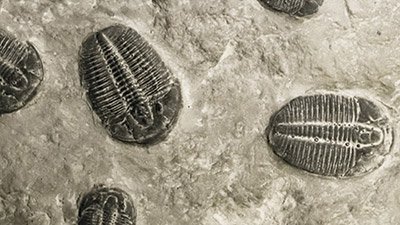
Tibetan High-Altitude Fossils Revise History of Elevation and Climate
ScienceDaily: “Fossils Found In Tibet Revise History Of Elevation, Climate” High in the Himalayan-Tibetan Plateau, 15,000 feet (4500m) above sea level, scientists were surprised to find “thick layers of ancient lake sediment filled with plant, fish and animal fossils typical of far lower elevations and warmer, wetter climates.”
For those that believe in long ages for our planet, such as team leader Wang Yang, a Florida State University geologist, the find was puzzling, as ScienceDaily explains:
That fossil evidence from the rock desert and cold, treeless steppes that now comprise Earth’s highest land mass suggests a literally groundbreaking possibility: Major tectonic changes on the Tibetan Plateau may have caused it to attain its towering present-day elevations—rendering it inhospitable to the plants and animals that once thrived there—as recently as 2-3 million years ago, not millions of years earlier than that, as geologists have generally believed. The new evidence calls into question the validity of methods commonly used by scientists to reconstruct the past elevations of the region.
Two to three million years ago is still far more time than the Bible allows for earth history.
Two to three million years ago is still far more time than the Bible allows for earth history—and far more time than catastrophic geology requires to account for earth’s landscape. However, it’s a virtual “moment” in old-earthers’ chronology of earth history, especially considering previous explanations for the Himalayas have ranged in the tens of millions of years. Creationists, based on ample evidence, rely on catastrophic models of geology that can account for thick layers of sediment—laid down over short periods of time in the past six thousand years.
In this case, the lake deposit was probably formed by a post-Flood lake. Water had accumulated on the Himalayan-Tibetan Plateau, which was uplifted by catastrophic plate tectonics at the end of the Flood. AiG’s Dr. Andrew Snelling explains that during this rapid uplift, “[C]ontinuing rainfall erosion would have been severe, so sedimentation would have been rapid enough to bury these plants and animals to produce the fossils—all post-Flood.” And all of this—including the catastrophic plate tectonics—would have been just over four thousand years ago.
For more information:
Remember, if you see a news story that might merit some attention, let us know about it! (Note: if the story originates from the Associated Press, Fox News, MSNBC, the New York Times, or another major national media outlet, we will most likely have already heard about it.) And thanks to all of our readers who have submitted great news tips to us.
(Please note that links will take you directly to the source. Answers in Genesis is not responsible for content on the websites to which we refer. For more information, please see our Answers in Genesis Privacy Policy.)
Recommended Resources

Answers in Genesis is an apologetics ministry, dedicated to helping Christians defend their faith and proclaim the good news of Jesus Christ.
- Customer Service 800.778.3390
- Available Monday–Friday | 9 AM–5 PM ET
- © 2025 Answers in Genesis




